Chepstow, Monmouthshire
Up to 1834
No information.
After 1834
Chepstow Poor Law Union was formed on 16th May, 1836, with six of the Herefordhsire parishes only being added in September of that year. Its operation was overseen by an elected Board of Guardians, 43 in number, representing its 40 constituent parishes as listed below (figures in brackets indicate numbers of Guardians if more than one)
County of Glocester:
Alvington, Aylburton, Hewelsfield, Lancaut, Lydney, St Briavels, Tidenham, Woollaston.
County of Monmouth:
Caerwent with the hamlet of Crick, Caldicott, Chapel Hill, Chepstow with the hamlet of Hardwick (3), Dinham (2), Howick, Ifton, Ilton, Kilgwrrwg, Little Tintern, Llangwym Icha, Llangwym Ucha, Llansoy, Llanvair Discoed, Llanvihangel Rogiett, Llanvihangel Tor-y-Mynydd, Matherne, Mounton, East Newchurch, West Newchurch, Penterry, Portscuett or Portakewett, Rogiett, St Arvans, St Brides Netherwent, St Pierre and Runstone, Shire Newton, Trelleck Grange, Undy, Wolves Newton,
Later additions: Kingsmark, St Arvans Grange (both in 1862).
The population falling within the Union at the 1831 census had been 11,433 with parishes ranging in size from Llangwm Icha (population 25) to Chepstow itself (3,534). The average annual poor-rate expenditure for the period 1833-35 had been £3,603 or 6s.4d. per head.
The Board of Guardians met at the workhouse each Saturday at 11am.
Chepstow Union workhouse was erected in 1837-8 at the north side of Mounton Road to the south-west of Chepstow. Its location and layout are shown on the 1901 map below:
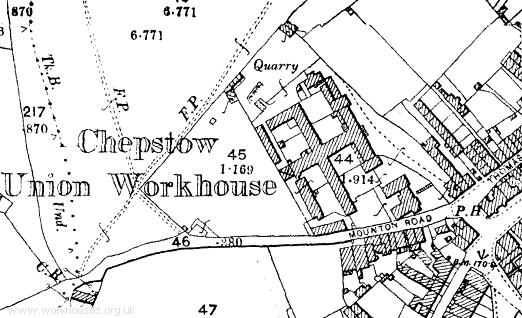
Chepstow workhouse site, 1901.
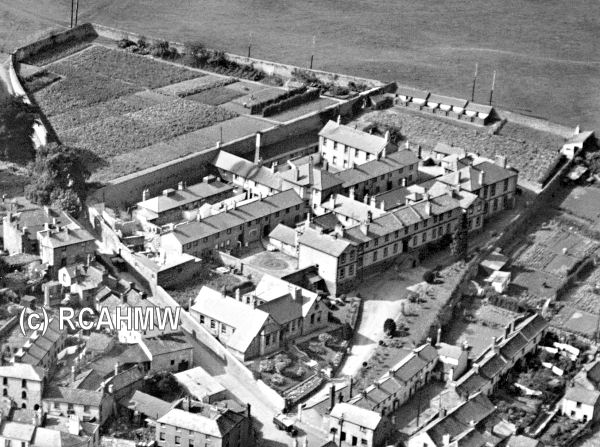
Chepstow workhouse, aerial view from the east, 1929..
© RCAHMW. Reproduced with permission.
Designed by George Wilkinson, the workhouse appears to have been based on the Poor Law Commissioners' model 200-pauper plan and could accommodate 150 inmates. In the original building, the east-facing entrance block contained a boardroom, waiting room and stores. To the rear, the children's wing contained their school and dining room rooms on the ground floor and dormitories above. The children's wing linked to the centre of the building, where the kitchen and master's quarters were located. Accommodation for females was in the wing to the south and for males to the north, with wards for the sick on the ground floor. The dining-hall, also used as the women's dayroom, lay to the west.
In 1857, the front of the building was extended. A major enlargement scheme in 1877 included a new block containing a boardroom, schoolroom, clerk’s and relieving officer’s offices, waiting room and lavatory; a block containing a boiler house washhouse, laundry, drying closet and coal shed; a new two-storey block; a new broad staircase to the men’s infirmary; and a new mortuary. The additions increased the capacity of the workhouse to 175 places. The children later went out to the local board school and the schoolroom was then used as a chapel for the inmates. New vagrant wards, designed by Mr B. Laurence of Newport, were erected in 1895.
In 1930, the site was taken over by Monmouthshire Council and became Regent House Public Assistance Institution. Most of the workhouse buildings have now been demolished. The former boardroom, office and school room block, at the south-east corner of the site is now used as a nursery.
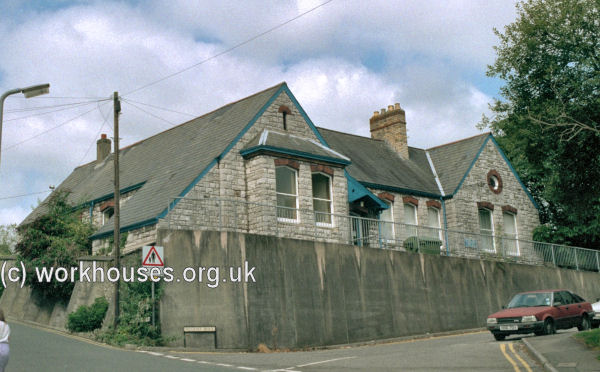
Chepstow board-room block from the south-east, 2000.
© Peter Higginbotham.
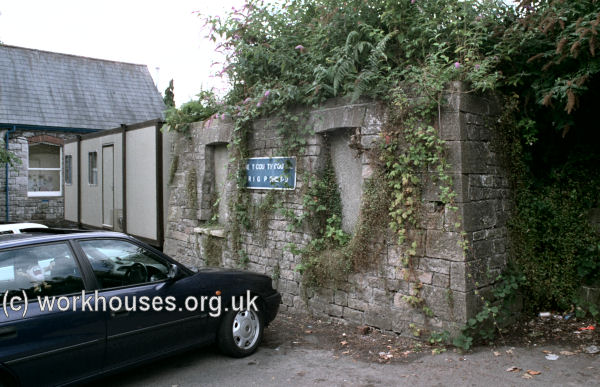
Chepstow fragment of main block from the north-east, 2000.
© Peter Higginbotham.
Sudbrook Children's Homes
In 1899, the Chepstow Union established children's homes in a row of five houses, part of a terrace on what is now Sudbrook Road, Sudbrook.
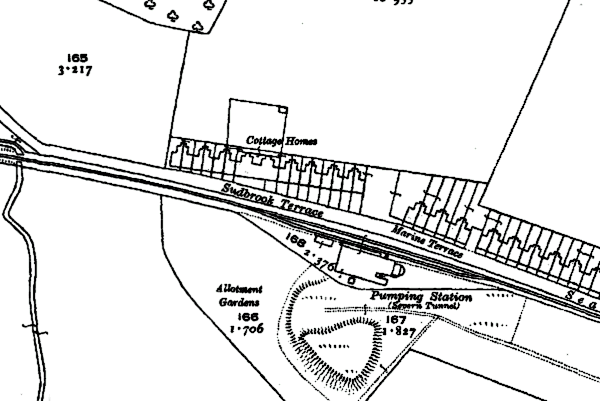
Sudbrook cottage homes site, c.1919.
The property is now in private residential use.
Staff
- 1844: — Master: Joseph Davis; Matron: Sarah Davis.
- 1859 — Governor: John Kent; Matron: Mary Kent; Schoolmistress: Mary Taylor; Chaplain: Rev. George Jones.
- 1871 — Master: JF Hartland; Matron Mrs Julia Hartland; Schoolmistress: Miss Julia Clathworthy; Nurse: Jane Price; Porter: Henry Flowers.
- 1881 Census
- 1891 — Master: Thomas William Steel; Matron: Mary Martha Steel; Infirmary Nurse: Margaret Moulding; Porter: John James.
- 1895 — Master: Evan Davies; Matron: Mrs Davies; Chaplain: Rev. Egerton John Hensley.
Inmates
Records
Note: many repositories impose a closure period of up to 100 years for records identifying individuals. Before travelling a long distance, always check that the records you want to consult will be available.
- Gwent Archives, Steelworks Road, Ebbw Vale NP23 6DN. Holdings include: Guardians' minute books (1838-1929); Admissions and discharges (1869-72, 1880-1903, 1909-30); Births (1866-1914); Creed register (1877-8, 1912-14); Punishment Book (1881-1913); etc.
Bibliography
- Higginbotham, Peter The Workhouse Encyclopedia (2014, The History Press)
- NEW! Workhouses of Wales and the Welsh Borders. The story of the workhouse across the whole of Wales and the border counties of Cheshire, Gloucestershire, Herefordshire and Shropshire. More...
Links
- None.
Unless otherwise indicated, this page () is copyright Peter Higginbotham. Contents may not be reproduced without permission.


